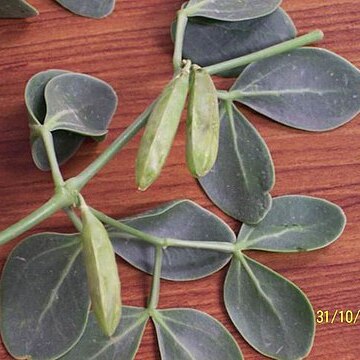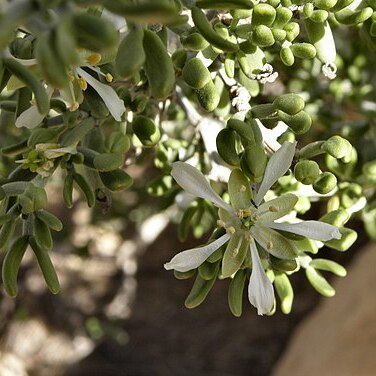Annual or perennial glabrous herbs, often small, sometimes scandent on other vegetation, rarely becoming shrubs with a woody base. Leaves opposite, usually 2-foliolate on common petiole, rarely sessile or simple, often succulent; petiole flattened or terete; leaflets articulated or continuous with petiole, stipellate. Flowers single, rarely paired at each node, bisexual. Pedicel usually erect in flower, deflexed in fruit. Sepals 4 or 5, often persistent and downturned in fruit. Petals 4 or 5, rarely 3, quickly caducous, longer than or shorter than sepals, usually yellow fading to white, rarely orange or white, without other markings. Stamens usually 8 or 10, rarely 4 or 6; filaments subulate or winged at base. Nectariferous disc 3–5-lobed; lobes sinuate or if free, then oblong or semicircular with papillose margin or apex. Ovary (3–) 4-or 5-angled, (3–) 4-or 5-celled; ovules 2–6 per cell. Fruit usually pendent, rarely erect, 4-or 5-angled loculicidal capsule or indehiscent and 3-or 4-winged, breaking into dorsally winged cocci or remaining fused together. Seeds 1–5 per cell, smooth or verrucose, mucilaginous when wet.
Shrubs or shrublets, rarely annual herbs. Leaves paired at each node, equal in size, paripinnate or rarely with 1 leaflet or simple; stipules membranous or fleshy. Flowers solitary or in cymose clusters at each node, 4-5-merous, regular. Petals white, yellow or orange, clawed. Stamens 8-10 in 2 whorls; filaments with entire, bifid or bipartite basal scale. Ovary glabrous or covered with short hairs, 5-lobed, 5-locular; ovules few-numerous in each locule; style and stigma simple. Fruit a loculicidal or septicidal capsule. Seed with endosperm.
Shrubs, perennial herbs, or rarely annuals. Leaves opposite, even-pinnate or rarely simple; petiole herbaceous or membranous; leaflet blades plane or sticklike, fleshy. Flowers axillary, solitary or paired. Sepals 4 or 5, sometimes caducous. Petals as many as sepals, orangish red, white, or yellow, sometimes with an orange claw or pale along margin, rarely apetalous. Stamens 8-10, abaxially with scale-form appendages. Ovary 3-5-locular. Capsule winged or not, dehiscent or indehiscent, with 1 to several seeds per carpel.
Stamens 8–10, inserted at the base of the disk; filaments subulate, provided with a usually fimbriate or pectinate, bifid or bipartite appendage at the base; anthers oblong or oblong-ovate.
Leaves opposite, (1) 2-foliolate, succulent, often caducous; leaflets very variable in size and shape, subcircular, spathulate, elliptic, linear, lanceolate or lanceolate-elliptic.
Petals 4–5, sometimes unguiculate, usually longer than the sepals, imbricate, whitish or yellow and often with a red spot at the base, spreading.
Ovary sessile on the disk, 4–5-locular, with 2 or more pendulous ovules in each loculus; style simple, terete, with a small stigma.
Sepals 4–5, imbricate, persistent or deciduous, sometimes connate at the base, somewhat fleshy.
Fruit a capsule or samara, 4–5-locular, 4–5-angled or winged, usually with several seeds.
Small shrubs or shrublets, rarely perennial or annual herbs, often armed.
Flowers solitary or sometimes 2-nate, terminal.
Seeds crustaceous, with scanty endosperm.
Disk cup-shaped, fleshy, 8–10-angled.
Stipules present, often spiny.


